 Vegan around Annapurna – what can you expect? Frankly, I had no idea what to expect. Travelling as a vegan has been hard at times, but I started to get the hang of it I guess.
Vegan around Annapurna – what can you expect? Frankly, I had no idea what to expect. Travelling as a vegan has been hard at times, but I started to get the hang of it I guess.
Without any reseach I embarked on a bus trip towards to unknown. My decision to do a hike had been made 2 days before, and I only briefly found time to go to the supermarket and stock up on snacks.
This is how I survived the Himalayan mountains on a vegan diet:
I started by trying out the fried noodles, soup and Thukpa, but those are tricky dishes to order. It depends from lodge to lodge how they are made.
Noodles for example, will always be instant noodles from a package. It’s incredibly bad for you, so after one time, I never tried it again. However, I’ve seen people order it and get two packages of high-sodium noodles on their plate for eight times the price.
Soups are another story. Sometimes they are freshly made, and other times, they just lie and say it is not from a package. I’m actually convinced that more than 90% of the soups I’ve eaten which were claimed to be freshly made, were actually instant. And some other times, they clearly gave me instant noodle soup without the noodles. Ugh. And then there was another time where people lied to me, saying there was no milk whatsoever in my soup. Later, I found the soups I’d gotten in the supermarket and the list of ingredients was depressing.
 So, always ask if the soup is freshly made, ask if you can watch them make it (open kitchens are very common in Nepal, I’ve seen a lot of my food being made), and stress the fact you have allergies, because food choices for Nepali are an unknown luxury. Also, even if you tell them you have allergies, they tend to lie because they just don’t understand. You can’t blame them.
So, always ask if the soup is freshly made, ask if you can watch them make it (open kitchens are very common in Nepal, I’ve seen a lot of my food being made), and stress the fact you have allergies, because food choices for Nepali are an unknown luxury. Also, even if you tell them you have allergies, they tend to lie because they just don’t understand. You can’t blame them.
Vegetarian spaghetti, fried macaroni and veg curry are mostly safe, but will contain loads of oil and spoonfulls of salt. Also, you will have a hard time finding vegetables on your plate. It’s mostly just a tiny bit of shredded cabbage. And did I mention the excess salt?
The higher I climbed, the more I started to settle for Dal Bhat. This is the national dish with at least a descent amount of vegetables. 80% of the people in Nepal have this dish at least twice a day. 90% of Nepali have never survived a day without*. The dish consists a mountain of rice, a lentil soup, fried potatoes and vegetables. On top of that, you can ask for a refill as much as you want. So you can stuff yourself until you are more than full. Once again, most of the food is very greasy.
Upside: Nepali don’t use animal oil, because it is too expensive. They use sunflower oil instead.
I tried to get Dal Bhat in the morning. Dal Bhat power 24 hour, no water no shower! It’s true–this dish gives you enough energy to climb a mountain (what a coincidence!). However, most of the lodges don’t want to go through the effort of making it in the morning and will ask you to settle for something else (like veg curry of oatmeal). So I had Dal Bhat and 2 refills for lunch and a very small snack in the evening (like some nuts or dried fruits).
Dal Bhat never got boring to me, but my butt wasn’t really happy with it. Still, the menus are the same EVERYWHERE. And it does get frustrating sometimes — you never know what to order, because the same dishes turn out differently everywhere. You never know what you’ll get in front of you. I’ve had so much disappointment from not getting what I though I’d get. Everyone has his own interpretation. The soup could be great and freshly made or instant and loveless. Your veggie curry could contain tons of vegetables, or only potatoes and taste like the ones in the Dal Bhat you’d had the night before.
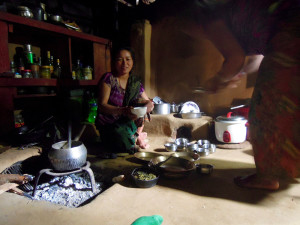 If I would have known then what I know now, I would have done it very differently. Since the food is so greasy and salty, and not to be trusted as vegan, I would recommend you pack up spices, some soy sauce, Marmit, peanut butter, tomato paste…whatever you like, and pay for your stay. Uh, wait, what? The lodges are free? Yes, they are — if you promise to eat in their restaurant. Clever, but if you take the above mentioned factors into consideration, it’s not a fair deal: you will spend at least 1000 rupees and have crappy food in return.
If I would have known then what I know now, I would have done it very differently. Since the food is so greasy and salty, and not to be trusted as vegan, I would recommend you pack up spices, some soy sauce, Marmit, peanut butter, tomato paste…whatever you like, and pay for your stay. Uh, wait, what? The lodges are free? Yes, they are — if you promise to eat in their restaurant. Clever, but if you take the above mentioned factors into consideration, it’s not a fair deal: you will spend at least 1000 rupees and have crappy food in return.
My solution: better to pay for your bed (max 250 rupees) and order plain dishes like plain rice, spaghetti or macaroni and green salad. Watch out though — sometimes if you order “plain”, they will over-fry it and you’ll end up with oil, salt and a little bit of spaghetti. Specify “without oil, salt or anything, just cooked, nothing else”. (Really, you will thank me later.) Then you can just do your own magic with your small survival package. For example: add some soy sauce and spices to your plain rice. Or add soy sauce to the end of your peanut butter jar with some garlic, ginger and chili, shake it well and add it to whatever dish you like. It is a super handy and delicious sauce! Or you can do the same with tomato paste and some water, basil, garlic, onion, etc. and add this to your spaghetti. Yum!
Now that you know what to expect, you can choose whether you want to eat unhealthy during your trek or carry along your own condiments on your poor back. Next time, I’ll go for the second option for sure.
* These numbers are based on a personal survey, but come close to the truth.
About the author: I am Marie, a simple farmer’s daughter without a plan. In October 2015 I decided to leave everything behind, sell my furniture and reduce my belongings so they could fit in a backpack. I’m determined to realize my dreams and travel the world. You can follow my blog at www.belgianturtle.comand find me on Facebook: www.facebook.com/belgianturtle.
Nepal photo via NepalValleyTreks.com

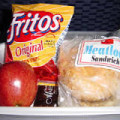
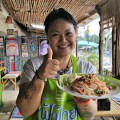

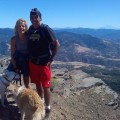
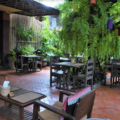
No Comments